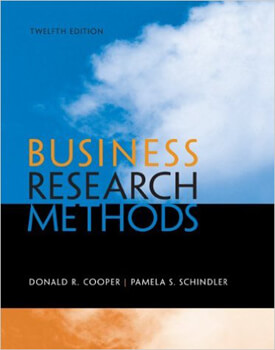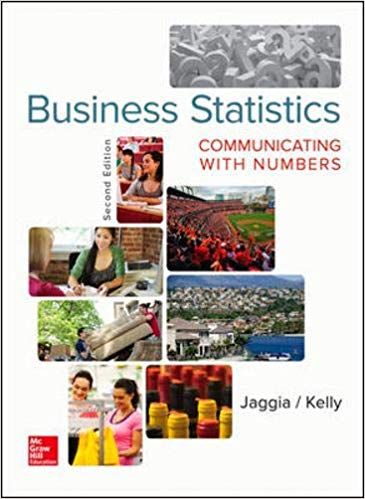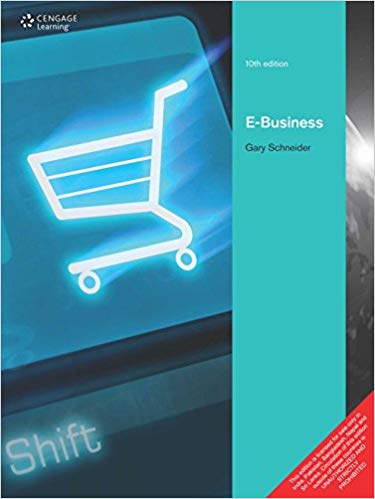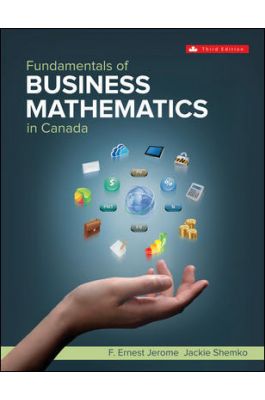Solution Manual for Business Research Methods 12th Edition by Cooper
A GEM of a Study
Abstract: The Global Entrepreneurship Monitor Entrepreneurial Assessment, a joint project of The Kauffman Center for Entrepreneurial Leadership at Babson College (now Arthur M. Blank Center for Entrepreneurship) and The London Business School, has undertaken a long-term, large-scale project to prove the causal links between a government’s economic policies and initiatives, the resulting entrepreneurial activity and subsequent economic growth. This case describes multiple-stage research, including thousands of interviews in several countries by established research firms.
How/When to Use
This case deals with the concept of causal studies vs. descriptive studies and what needs to be included in the research design of each study type. It also deals with what constitutes control in research design; in this context it is best used with chapters 5 and chapter 6 although it may be used with chapters 6-9. This is also a great case to use to discuss constructs vs. concepts (Chapter 3), as Exhibit C-GEM-1.1 clearly has struggled with defining numerous constructs and multiple-measurement variables and, therefore, could be used to further explore text Exhibit 3-1. The case also mentions the use of standardized data; in this context you could use the case to explore how “standardized” data from different countries really is and where the student seeks such country-specific data.
Business Research Methods 12th Discussion Questions:
- What are the independent and dependent variables in this study?
Using the GEM Conceptual Model, students should first identify that the dependent variable the study purports to measure is the construct of economic growth through GDP and jobs. But they might also note that the construct of business dynamics is also a dependent variable of interest, as it contains new firm/job creation, firm/job growth, firm/job dissolution, and firm/job shrinkage.
The independent variables in the study are numerous and contained within the GEM Conceptual Model as the constructs of general national framework conditions, entrepreneurial opportunities, entrepreneurial framework conditions, and entrepreneurial capacity. Each of these constructs contains numerous other concepts and constructs. Here is an excellent opportunity to discuss the nature of constructs and the importance of breaking down such complex entities in terms of more concrete and truly measurable elements as is done in Exhibit 3-1.
- What are some of the intervening, extraneous, and moderating variables that the study attempted to control with its 10-nation design?
Many of the variables leading to the dependent variable could be seen as extraneous, intervening or moderating, as easily as they can be identified as independent. Extraneous variables are described in Chapter 3 as almost infinite in number and treated “as independent or moderating variables” and “assumed or excluded from the study.” The GEM authors took great care in tracking as many of these variables as possible, and chose at the outset to use most as independent variables having some, hopefully measurable, influence of the chosen dependent variable(s). Many of the attitudinal variables in the model are treated as moderating variables–a class of “independent variables believed to have a significant contributory or contingent effect on the IV-DV relationship.”
The business start-up rate was found to have a high correlation with people’s perceived opportunities (0.88) and with the GEM Opportunity Perception Index (0.79)–which factors in perception of positive opportunity in a person’s country to start a business, the capacity (skills and motivation) to pursue the opportunities, the level of respect for entrepreneurial efforts by others in the society, and the level of resentment against those who do well in an entrepreneurial venture).
You could use this question to discuss factors not mentioned in the GEM Conceptual Model that might contribute to business/job formation and ultimately to higher GDP. One factor that usually comes up in such a discussion is creativity of ideas. This can generate a lively discussion about how the study could have measured for ‘creativity’.
Students might also mention demographic characteristics of the country, such as median age. Using Bill Gates as a model, you can expect many students to believe in the notion that entrepreneurial ventures are generally started by young adults. They might point out after you show the graphs below that Japan has a median age of almost 40 years compared to 34.3 for the U.S. Also, the percentage of the population under the age of 15 in the US is 22%, compared with Japan at only 15%. Additionally, students may raise the issue of economic stability. Given the unprecedented economic growth experienced in the U.S. in the latter part of the 20th century, they may want to use economic stability as a moderating variable.
| SOURCE: GEM 1999 UK Executive Report | |
Such variables need to be assumed, discounted, or controlled in order for causation to be proven with some degree of certainty. A great effort has been expended in this study to achieve high levels of both validity and reliability. This question is designed to exhibit a lively discussion in the context of control as it is described in Chapter 9 Business Research Methods 12th










